- News
- Reviews
- Bikes
- Accessories
- Accessories - misc
- Computer mounts
- Bags
- Bar ends
- Bike bags & cases
- Bottle cages
- Bottles
- Cameras
- Car racks
- Child seats
- Computers
- Glasses
- GPS units
- Helmets
- Lights - front
- Lights - rear
- Lights - sets
- Locks
- Mirrors
- Mudguards
- Racks
- Pumps & CO2 inflators
- Puncture kits
- Reflectives
- Smart watches
- Stands and racks
- Trailers
- Clothing
- Components
- Bar tape & grips
- Bottom brackets
- Brake & gear cables
- Brake & STI levers
- Brake pads & spares
- Brakes
- Cassettes & freewheels
- Chains
- Chainsets & chainrings
- Derailleurs - front
- Derailleurs - rear
- Forks
- Gear levers & shifters
- Groupsets
- Handlebars & extensions
- Headsets
- Hubs
- Inner tubes
- Pedals
- Quick releases & skewers
- Saddles
- Seatposts
- Stems
- Wheels
- Tyres
- Health, fitness and nutrition
- Tools and workshop
- Miscellaneous
- Tubeless valves
- Buyers Guides
- Features
- Forum
- Recommends
- Podcast
feature
Hitting 100kph on a bike — what does it take to break this elusive cycling speed barrier?
Talk to any non-cyclist, and it won’t be too long before they might ask you: "Why don't cyclists use cycle lanes?" Or alternatively (and preferably): "What’s the fastest you’ve ever gone on a bike?" Obviously, the answer that we all want to be able to give to the second question is that three-figure number of over 100kph; however, it’s certainly easier said than done to hit this elusive number. Here's my experience of trying to break the barrier.
A few years ago I did actually proudly join the 100kph club, which is just over 62 miles per hour for those who prefer old money. This was on a very long and very straight descent in the alps, but there's always a chance it could have been a one-off or a GPS error. It would be nice to do it again with more proof.
Usually, when working on a feature like this I'm pretty sure that I am actually capable of achieving the feat before starting. With this one, I was less confident. What that does mean is that you can benefit from my first-hand trial and error approach and/or watch me walk and ride back up a hill MANY times!
Descending at high speeds: the disclaimers
Just to be clear, the point of this article and video is certainly not a call to encourage you to head out and try to hit an arbitrary (very fast) speed on the first steep road you come across on your next ride. My attempts took place on very well maintained, deserted roads with lots of visibility, and I'm an experienced descender.
The most important takeaway from this should be to ride safe when hitting fast speeds. Keep your wits about you, make sure your bike is mechanically sound and remember that this isn't something to be attempted on a whim. Just take a look at how rarely even the pros hit these speeds (on fully closed roads) and that should give you some indication of how difficult it is for even the most experienced riders.
For most riders with some road cycling experience, hitting speeds over 50kph is going to feel very fast, and it's important to work on bike handling skills and confidence to improve descending speed. Check out our top tips for better descending as a very good starting point to get down descents safely and quickly.
> Best aero road bikes 2022 — wind-cheating bikes with an extra turn of speed
To re-emphasise those disclaimers again, this is not something I would ever want to attempt in the UK, or most places for that matter. Not only are many roads poorly maintained where I live, but they can also be slippery and busy with traffic. To do anything like 100kph, you need a clear view of a LONG way in front of you. Luckily for me, a recent training camp was the perfect opportunity, with long, fast and straight traffic-free descents.
Attempt 1
So, for my initial attempt, I found a nice straight road for obvious reasons. I GoPro’d myself up and waited for a dry day, as it’s a really bad idea to fall off doing anything close to 100kph... I lost enough teeth and skin at 50kph! Rain won't slow you down exactly, but it will drastically reduce your visibility and grip, and increase your stopping distance if you need to brake.
Most of the best cycling computers have the functionality to tell you both your current speed and your max speed of that ride. Please oh please, if you're trying to descend quickly, don't glue yourself to the screen! On a descent you need to focus on the road ahead of you and not a tiny display, seeing the number won't make you any quicker. There is only one exception to this and it's if you're looking at a map. It can be useful in some cases, and it's been known for professional riders to bring up the route on unknown descents to visualise corners in front of them.
Hitting higher speeds
To gain those extra 20 or so kilometres per hour, it’s clear that some changes were going to have to be made. More weight can increase descending speed, and while I'm committed to the cause I wasn't going to put weight on specifically for this exercise, so I was stuck at around 72kg.
> Watch: Lorry-drafting Brazilian cyclist hits 168 kilometres an hour
The single largest difference that you can make to your top speed (other than drafting something of course) is the where and the when. Even the strongest riders can't hit 100kph on a twisty, shallow descent with a headwind. You'll also need a serious amount of stopping distance, with good visibility of traffic and your surroundings with no junctions, crosswind gusts or anything else unpredictable.
In these situations apps like Strava and komoot are your friend, because they allow you to quickly and easily find steep and straight descents that are going in the same direction as the wind. I quickly pinpointed my target hill and the section that I would be aiming to hit my top speed on. All I had to do then was wait for right wind conditions, a 20kph tailwind ideally.
Next, I considered what’s actually slowing me down when barrelling down a descent; and there are only really two things. This is a vast simplification, but I’m ignoring drivetrain losses as I probably won’t be pedalling when hitting my top speed. Vibrational losses are still a fairly grey area, and there's not a whole heap I can do to improve them.
That leaves two things. Firstly my rolling resistance, which is caused by the contact patch between my tyres and the road. Your contact patch on a road bike is only about the size of a two pence piece, but to minimise resistance as much as possible I switched to a set of racey summer tyres. I opted for Challenge’s new handmade Criterium RS TLR tyres (full review coming soon). I opted for a 27mm size to balance aero and rolling resistance.
I also set the tyres up tubeless as we’re told that this offers the lowest rolling resistance because there is no energy wasted on deforming a tube.
The second thing that slows descents down - and this is the big one - is aerodynamic drag. This comes in two main forms: skin friction drag, basically the air sticking to clothes and the body on its way past; and form drag, which causes a big turbulent wake behind the rider, and is influenced mainly by frontal area.
As a cyclist's speed goes above around 20kph, it's drag which becomes the main force impeding you. At 100kph any other forces are all but negligible, and small differences can begin to have a large effect.
From the equation above we know that drag equals 0.5 x Rho (air density) x Velocity2 x Coefficient of Drag (the shape I am) x My frontal area.
So, what did I do to make myself more aerodynamic? Well first up is a wheels swap to try and reduce that Coefficient of drag. I ditched the shallow sections for a set of Parcours Chrono hoops (review coming soon) that are 68mm and 75mm deep front and rear respectively. I also sized down my clothing to make sure it sat as close to my body as possible and didn’t flap about, which should be of benefit to both my coefficient of drag and frontal area. I also opted for a semi-aero helmet, aero socks and shaved my legs (in February, this is serious!)
Having failed another few times, I set about doing a bit more research on the weather. I waited for a day with a lovely tailwind and fitted a full-size 53t chainring instead of the 52t one to help me continue pedalling up to a higher speed. I also do finally spin out on the steepest part of the descent, going into the top tube 'super tuck' position to try and really reduce my frontal area (just nobody tell the UCI).
> Should you buy an aero road helmet? How much faster could you be?
A study by Bert Blocken (linked above) shows that the super tuck, where you sit on your frame's top tube, is significantly faster than other positions. Whereas in my previous attempt my position was 'Back down 2', the super tuck or 'Top tube 4' position is around 3% faster at the 72kph test speed, and likely even more at my 100kph target.
How challenging is it?
Even with all these changes it still took me most of a day to reach my target speed, which shows you that 100kph is pretty unobtainable in most situations. When travelling at high speeds on a descent it's important to try and stay relaxed, because if you clutch at the bars then you will just exacerbate any speed wobble. This could be a recipe for disaster.
To finally hit the elusive 100kph (it's elusive for good reason) I had to enlist the help of a mate for a lead out. Whilst drafting someone you'll be expending around 20-40% less energy, and in this case when speeds are high it would likely be near the top end of that.
Was it worth it? No, probably not... I rode up and down one hill FAR too many times! Even with an entire day at my disposal, perfect conditions and the perfect road, this was certainly a challenge.
126 kph downhill the Simplon Pass today getting close to my last speed record @Strava @GoZwift @iamspecialized @BORAhansgrohe @freie_presse pic.twitter.com/Bv7iMa1Bxe
— Marcus Burghardt (@MBurghardt83) June 14, 2017
Once again, the most important factor when riding your bike is safety. If you do feel that you have the necessary experience and skill to see how fast you can go on a descent, and find yourself in the required location where this is both safe and legal, then make sure your bike has had a good check over first, preferably with a second opinion from a professional mechanic.
What's the highest speed you've hit on a bike? And where did you do it? Let us know in the comments section below...
Jamie has been riding bikes since a tender age but really caught the bug for racing and reviewing whilst studying towards a master's in Mechanical engineering at Swansea University. Having graduated, he decided he really quite liked working with bikes and is now a full-time addition to the road.cc team. When not writing about tech news or working on the Youtube channel, you can still find him racing local crits trying to cling on to his cat 2 licence...and missing every break going...
Latest Comments
- hawkinspeter 2 sec ago
What's that? A mobile home for squirrels?
- PRSboy 14 min 2 sec ago
The advertising in Strava is in the feed, usually disguised as some low-grade challenge sponsored by Whoever. Every time one of your 'friends'...
- mark1a 21 min 50 sec ago
Brompton however....
- Backladder 32 min 42 sec ago
While original sash windows are nice they make it very hard to keep the house warm, we eventually went for upvc double glazed sash window...
- wtjs 51 min 26 sec ago
The UK's 'Active Travel' checklist seems to be:...
- Andrewbanshee 1 hour 55 min ago
As you said the pedals will be hidden anyway. My shoes, 3 pairs of them, have reflective strips on the heel and my winter trousers do too on the...
- Steve K 1 hour 56 min ago
Other drivers only care about disabled people when it gives them a way to object to cycling infrastructure.
- mark1a 10 hours 21 sec ago
I'll put you down as a no then.
- chrisonabike 15 hours 26 min ago
Well if you *can* interview the original riders at all surely they worked, at least?...
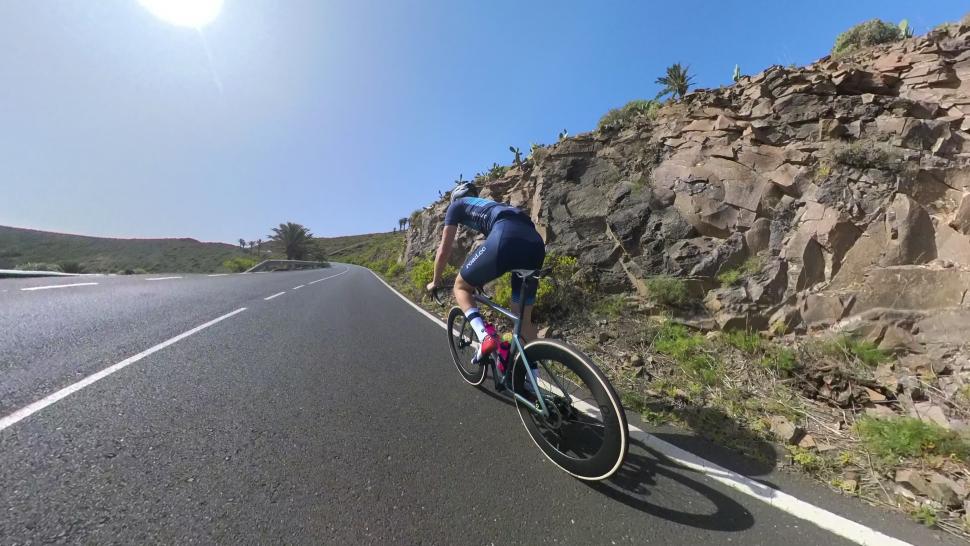




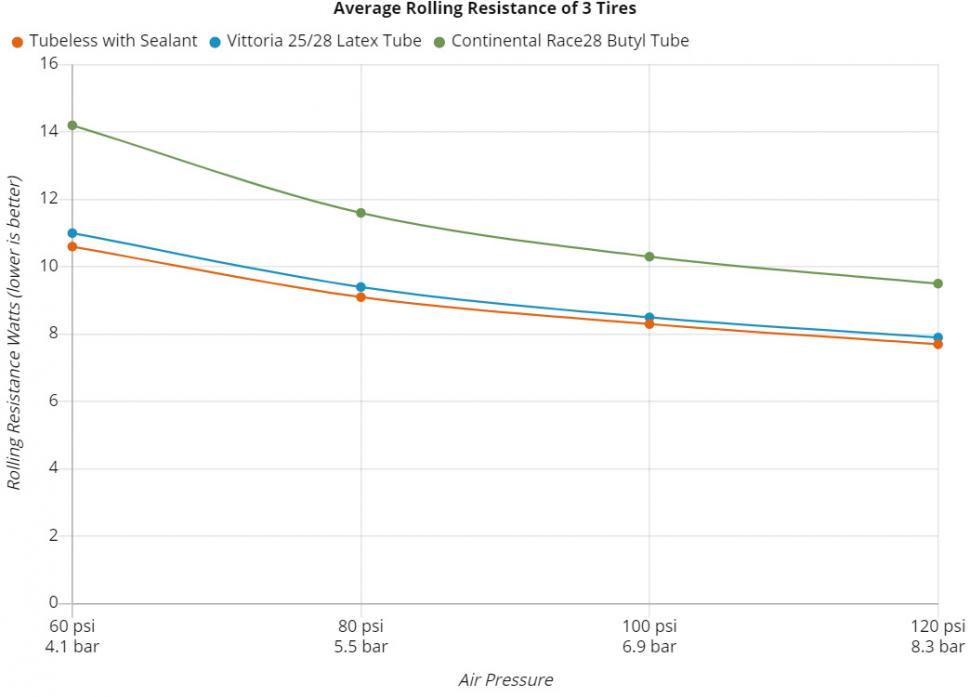

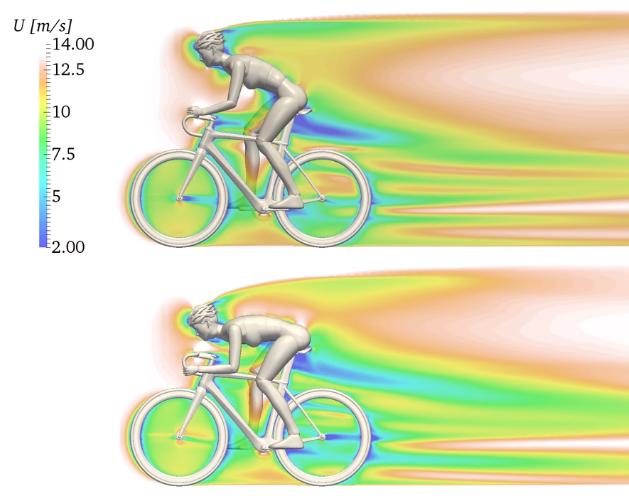
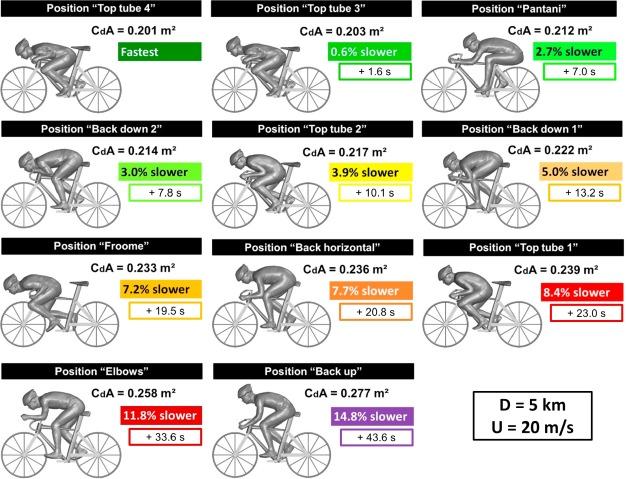
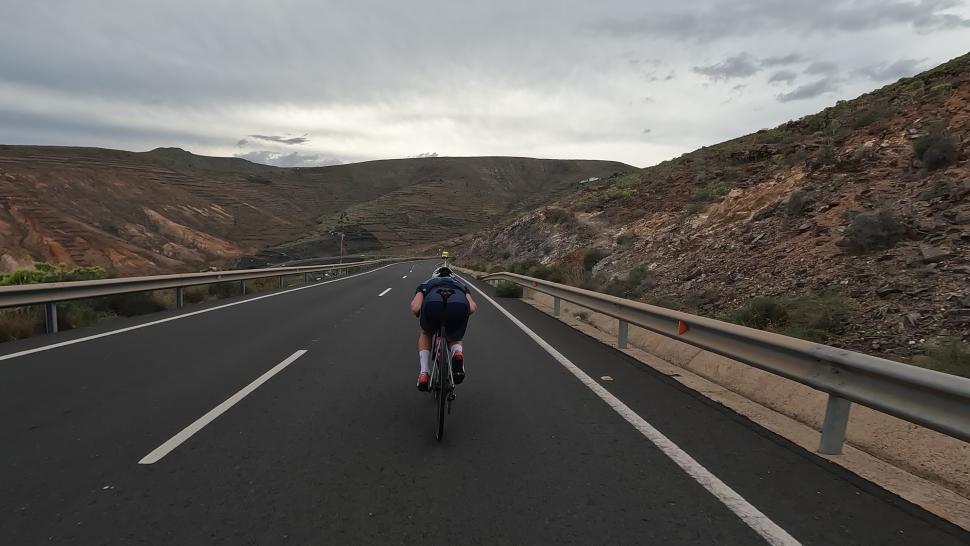

Add new comment
28 comments
I've hit 80.4km/h coming back to Eastbourne from Cuckmere Haven. I think on one of the shorter hills rather than the descent from Beachy Head which seems reasonably long and steep.
I have a pretty good average speed on the main road down into Henley-on-Thames, that seems quite long.
72km/h down the mountain on fist-size rocks during the Escape to Afan duathlon was the most fun though.
90.5 and 90.6 on the Nurburgring on two separate laps during the annual "Rad am Ring" event.
This was on the final descent of the Maratona dles Dolomites some years ago, when I was part of a crazy "bunch" descent with several absolutely unhinged locals.
It felt very, very sketchy at the time, and I wouldn't do it now that I have kids.
Fastest I've clocked on a single bike was 96kph down Mt Ainslie in Canberra. However, we've exceeded 100kph a couple of times on our tandem - the most memorable being down Willunga Hill in South Australia. We had a huge tailwind, and had to move out into the overtaking lane to overtake a car. My eyes were watering from the speed, so I didn't look sideways, but my wife said she smiled and waved at the occupants of the car as we went by, and had never seen three more surprised motorists.
53mph on our Tandem in The Lakes somewhere. My wife was screaming "faster, faster" as we were still piling on speed, but I chickened out feathering the brakes at 53 .... still alive.
From bailing out or from the beating for bailing out?
Back in the 70s when electronic bike computers first arrived I saw 60 mph through watering eyes on the 12% descent to Wincle in the peak district, you had to keep glancing down at the computer in those days as there was no memory for max speed.
Personally my attempt to break the 603,000 km/h barrier failed, but I remain the fastest human in the universe, according to my epic Strava fail.
Chapeau!
And that's just the average speed!
Only have a car speedo to go off but in a race in South Wales in 1983 (so no aero bikes or silly tuck positions) a small group of us were pulling away from a following vehicle whose driver told us later had 68mph on his speedo. We didn't know how fast we were going but I knew it was fast when we pulled out to overtake a wagon and I clipped 2 cat's eyes when changing lanes. On the basis that we were going faster than an indicated 68 and allowing for an optimistic speedo we must have been doing mid 60 mph
96kph on the very steep, straight bottom section of Mt Keira (NSW, Australia). 3 of us where slipstreaming each other on the upper more twisty section to gain speed. It was in the late 1990s so younger and crazier 🤪. 3 years later I crashed on the same section at around 70kph and received multiple fractures 🤔; so don't do such things anymore
I hit 64 mph in the back horizontal position on an old technology bike from 1984, coming down Tram Way in Palm Springs California back in 1987 or 88 with no, or very little wind, about 70 degrees, and an 8% grade. My bike computer was within 1 mph of accuracy, so it could have been 63 but not less. I was in a group of 5 others and we all had bike computers and were all showing the same speed within 1 mph of each other. We were in Palm Springs for an amateur race, and a day after the race we went goofing off before packing up and going home, and rode up Tram Way, and came back down to see how fast we could get going.
Makes me wonder how much faster we could have gone with the aero bikes of today.
Geez, I just remembered, that was in February 36 or 37 years ago, an anniversary for me! Time sure flies.
I just hit the magic ton on the lower slopes of the D8 into Aulus les Bains in the Pyrenees years ago. Had to pedal at an ungodly cadence to get there and it was super bumpy. Was followed by some crazy Frenchies in their car yelling 'Allez Pantani' which was rather fun.
Recently descended from Sauze du lac into Savines slipstreaming an obliging Volvo Estate with bike racks on top and managed to reach 111kph before my courage gave out.
Can't begin to imagine 126kph
I hit 53.4mph in Lanzarote last April heading back through Timanfaya National Park which isn't steep but is long, straight and undulating - a 25mph tailwind helped. It was on a non-aero Canyon rental with cheap alloy wheels. It was pretty exciting but I was just praying no-one decided to overtake a coach coming the other way! My 100km attempt while descending Teide in July was thwarted by a scary crosswind and didn't quite hit 50mph. In the UK I have only managed to hit just over 51mph down Pork Hill on Dartmoor despite being 90kg (and a bit).
86.6kmh on the Cunard descent in the Dublin mountains, 90 was there but I lost my nerve because there was a lot of sheep at the sides of the road.
I once reached just over 57mph/92k on Arran and had to sit up as my eyes were watering and eyesight was becoming a problem
Hit 56mph coming down Crow Road. Fortunately the road was a decent state at the time. Managed 55mph coming down from Rest and be Thankful towards Ardgarten. Got a thumbs up from a group of bikers who passed me. Like you had to sit up on both as the wind was playing havoc with my sight. Have laid off the adrenaline rush as the realisation of lycra and tarmac are not a good combination if I hit a stone.
The fastest I've seen is 52 MPH (84 km/h), but it was on my cheap Chinese "Bickerton" folding bike with 16" wheels!
Crikey!
I clocked over 95 kph for a stretch descending the Passo Fedaia... the upper reaches have one very long straight, clear sighted and steep, which is ideal. I imagine a more talented rider than me could easily crack the ton there.
I was on the drops for control, not trying especially hard to be aero, other than just tucking low.
Not big or clever, but very exhilarating! At least I was wearing a hat (joke)
Yeah, I did break 100kph, just once, a few years ago. It was descending El Teide in Tenerife. A local rider/staff at Bike Point rental suggested to use the back route from Vilaflor (not the standard busy route to Los Cristianos) in the direction of the South airport. He told me that the road surface was good, as long stretches had been relaid, and that the traffic was very light. He wasn't wrong!
There were a few long stretches where I regularly hit upper 50s (mph) and one especially long straight, where I could tuck confidently and breach the magic barrier of 100kph. Unbelievable descent and amazing really to feel able to trust a rental bike, albeit a well maintained, high quality brand (BMC).
My wife and I have descended faster than 100 km/hr on several occassions while in a full tuck on our Lynskey tandem, which was rock solid. Attached is a shot from 2015 on a max 12% grade.
Good, next challenge 140kph. You can lie down for that one though.
https://www.popularmechanics.com/technology/a22946/human-powered-speed-r...
TBH the ones where people ride behind a vehicle which reduces air drag seem the most frightening to me.
I have very nearly done 100kph. I had a weekend of Alpine cycling with friends in 2005. We did a big ride over Timmelsjoch which is rather high at 2474m (per wiki). The high altitude is relevant as there is measurably less aero drag up there. The descent on the north side, with another rider streaking ahead, was a good straightish road and I got down on the drops and let the bike run. It felt very, very fast. The road began to rise again and I sat up, laughing, and noticed I was still doing 80kph. Result - 99.9kph. I think this was a valid speed btw and not a computer limitation, that Sigma computer was rated to 250kph. All pre-strava but here's a photo.
I've hit 82kph once which was my fastest by far. It was on a long straight descent with good visibility so felt pretty safe. Probably helped as it was on a sportive on low traffic roads and while not really drafting other riders probably had a bit of a slipstream benefit from the guy several metres up the road.
I've hit 58mph, and 55mph on different decents. The 58 was on a relatively short, but steep drop, and the 55 had sheep on the road and was f***ing scary. I will hit it one day.
I hit 86.6 kmh before I lost my nerve with the amount of sheep around